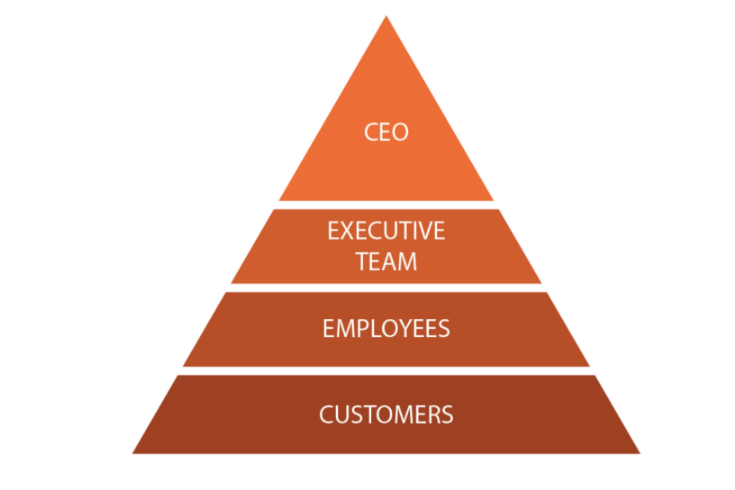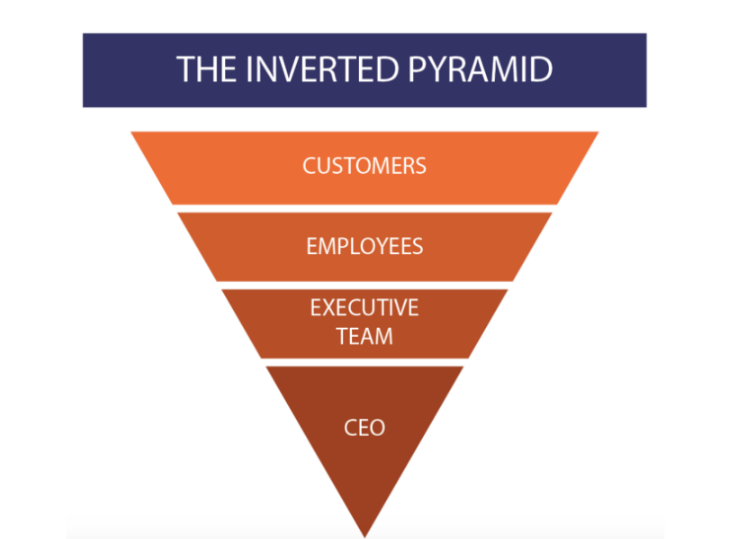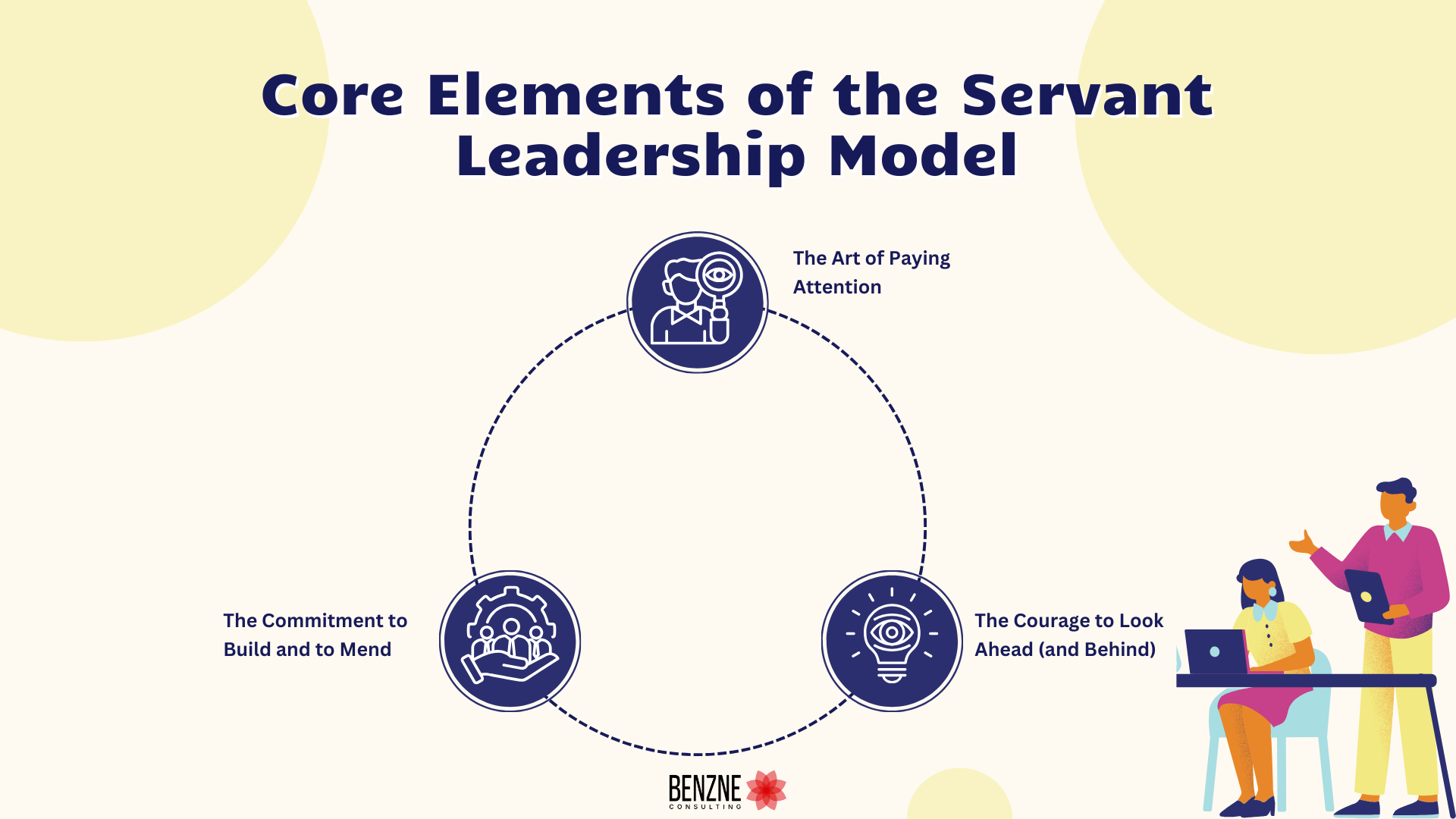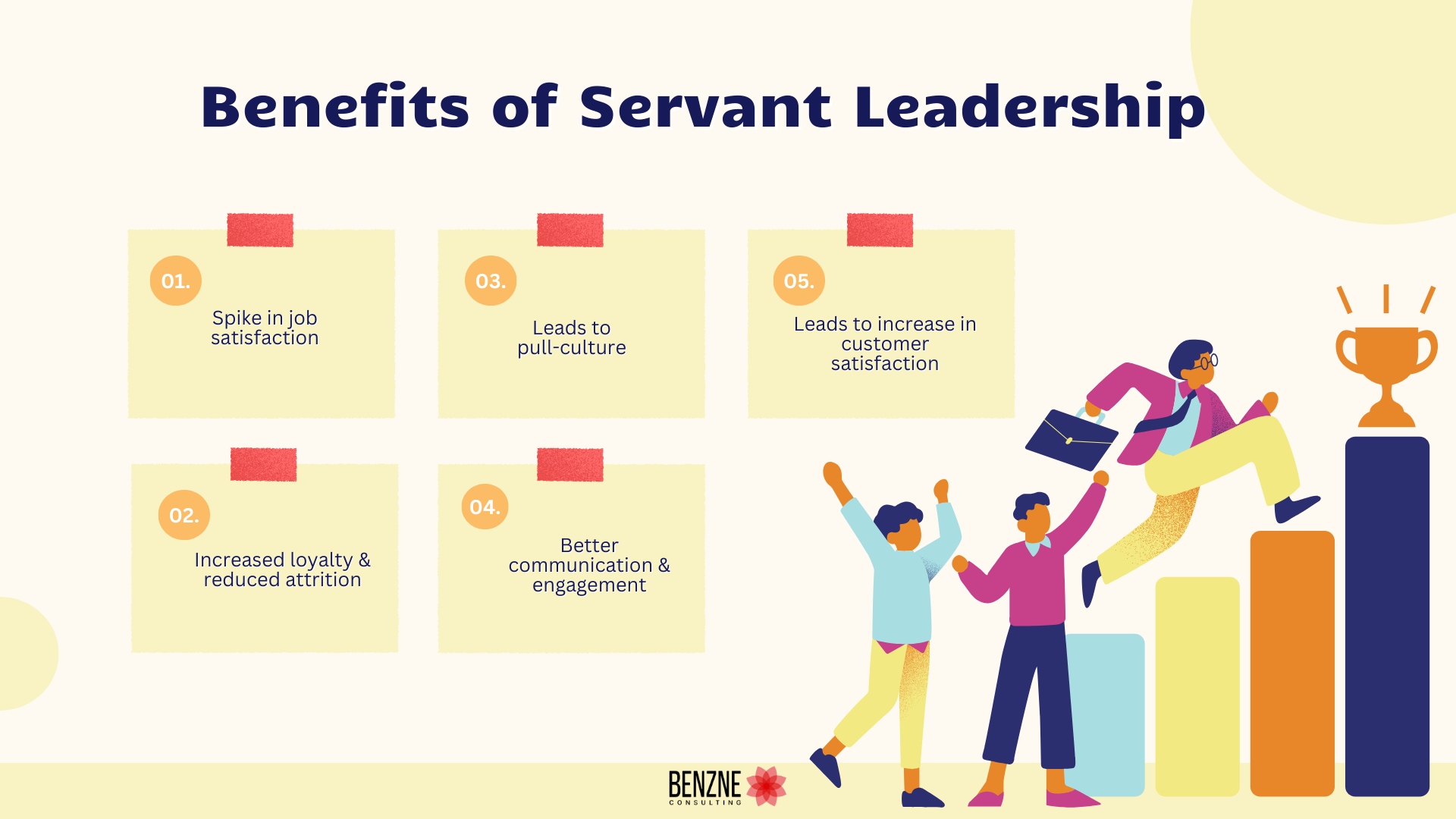“Yad yad ācarati śreṣṭhas tat tad evetaro janaḥ
sa yat pramāṇaṁ kurute lokas tad anuvartate”
“Whatever leading persons act, people in general follow them.
If the leading person says it is nice, then it is all right – the others also accept it.”
– A quote from Bhagwad Gita
We have all seen it. The manager who stands over their team, shouting orders about quotas and deadlines, treating every person just as a cog, a line on a spreadsheet, expected to perform the exact same function in the exact same way. Forget your unique skills, your needs, just produce, produce and produce more throughput. Soon to be replaced by an automation deployment because you always worked that way or should I say you were always made to work that way.
It is like a gardener standing over a rose bush, shouting, “Grow faster! Why aren’t your flowers as red as that plant over there?”
You can’t command a flower to grow.
A real gardener knows their job isn’t to shout orders at the plants. Their job is to create the perfect environment for them to thrive. They obsess over the soil, ensure the watering is just right, and make sure every plant gets the sunlight it needs. They know that a rose will be its own glorious self if it has what it needs to flourish.
That’s it. That’s the entire idea behind a powerful, and deeply human, way of leading: you stop trying to control people and start trying to serve them.
Introduction to Servant Leadership
In most companies, we picture a pyramid. The boss is at the pointy top, and the power flows downwards. But servant leadership flips that pyramid completely upside down.
Imagine the leader at the bottom, as the broad, stable base. Their job is to hold everyone else up. The team sits above them, supported and empowered. And at the very top, where the sun shines, sits the customers or the community, the people the team is actually there to serve.
This is not about being a pushover or letting people walk all over you. It’s the opposite. It’s a strategic, powerful choice. Your job as a leader is no longer to command and control, but to ask:
“What do you need to do your best work?”
“What’s getting in your way that I can remove?”
“How can I help you grow and succeed?”
The man who first coined the term, Robert K. Greenleaf, said it best: the servant-leader is a servant first. The drive to help and support is what qualifies them to lead. The ultimate test is simple, and it has nothing to do with your own personal glory. The real question is:
Are the people you lead growing? Are they becoming healthier, wiser, more autonomous, and more likely to become servants themselves?
If the answer is yes, you’re doing it right.
Defining Servant Leadership: Planting Seeds of Empowerment

A traditional manager sees their team as a machine. If one cog breaks, it’s a problem to be fixed or replaced. The goal is uniform, predictable output. Individuality is a bug, not a feature.
A servant leader sees their team as that garden. Every person is a unique plant. The star performer might be a sunflower that needs tons of direct light (public recognition). A brilliant but shy analyst might be a fern that needs shade and consistent moisture (quiet support and uninterrupted time). A junior team member might need careful pruning (clear, constructive feedback) to develop a strong structure.
Your role is to be the observant, attentive gardener who recognizes what each one needs. You are not treating everyone the same; you are treating everyone fairly by giving them the specific support they need to thrive.
When you do that, you stop being a boss who people have to work for, and you become a leader who people want to work with. You are not just growing a business; you are growing people. And that, in the end, is how you grow a garden that can weather any storm.
The Servant Leadership Model: A Framework for Flourishing
Forget everyone that you have seen on a corporate chart for a minute which has the CEO at the top and everyone else just cascaded down in neat orderly lines, it’s a model that is built for command & control. Just flip it upside down. That’s a servant leadership model, where the leaders are at the bottom, forming the strong stable base & seeing your primarily job as holding everyone else up i.e. your team is above you who is taking care of customers/community whom we all as a team representing business are responsible for taking care of.
You are no longer a commander shouting orders from the top of the hill. You’re the one in the trenches, asking, “What do you need? What rocks can I move out of your way? How can I clear a path for you to do your best work?” It’s a radical shift, but the results are even more so.
The Inverted Pyramid: Visualizing the servant leadership structure

Imagine our garden visualized as a pyramid. In a traditional model, the head gardener (the leader) would be at the pointy top, directing the junior gardeners (the team).

A powerful visual representation of servant leadership is the inverted pyramid. This inversion signifies that the leader’s primary role is to enable the success of their team, providing them with the resources, support, and autonomy they need to excel.
Flipping the pyramid is not just a nice thought; it completely changes how a team feels and functions. When people feel genuinely supported instead of constantly managed, the entire dynamic shifts.
Trust is not something you have to demand; it starts to build naturally. People stop being afraid to share half-baked ideas, and that’s where real innovation comes from. They stop hiding mistakes and start asking for help, which means problems get solved faster. They feel a sense of ownership, not just obligation.
Frankly, people are just happier. They feel valued as human beings, not just as “resources.” And let’s be honest, happy people who feel like their leader has their back don’t just work harder, they work smarter, they care more, and they stick around.
Core Elements of the Servant Leadership Model
Larry C.Spears studied the work of Greenleaf and came up with the following 10 characteristics of servant leadership: listening, empathy, healing, awareness, persuasion, conceptualization, foresight, stewardship, commitment to the growth of people, and building community. Forget memorizing long lists of “characteristics.” In practice, being a servant leader boils down to a few core disciplines. Think of them as your gardening tools.

- The Art of Paying Attention This is more than just “active listening”; it’s about tuning into the people around you. I once worked with a manager who noticed one of our best guys seemed completely checked out. Instead of putting him on a performance plan, she just took him for coffee. She learned he was dealing with a family illness that was draining him completely. By showing a little empathy and helping him adjust his workload temporarily, she didn’t just save a team member; she earned a level of loyalty that no bonus could ever buy. This skill combines listening, empathy, and being aware enough to notice when the soil needs a little extra water.
- The Courage to Look Ahead (and Behind) A servant leader does more than just manage the day-to-day. They have one eye on the horizon, conceptualizing where the team is going and spotting potential storms (foresight). But they also have one eye on the ground, making sure the work being done today is something the team can be proud of tomorrow. This is stewardship: the deep-seated belief that your job is to leave the team, the project, and the organization in a better state than you found it. You are not just renting the garden; you are its caretaker for a season.
- The Commitment to Build and to Mend Great leaders are builders. They actively invest in their people’s growth, finding joy in seeing someone on their team achieve something they didn’t think was possible. But they are also menders. When conflict arises—and it always does—they don’t take sides or let it fester. They step in to facilitate conversations and help repair the trust. They are constantly working to build a true sense of community, a place where people feel safe, connected, and supported by one another, like trees in a healthy forest.
How the Servant Leadership Model Reshapes Organizational Dynamics?
Shifting from a push culture to pull culture is the key impact that I see when organizations enrol in the servant leadership model. Workers when they feel happy, supported & good, they actually work harder, everyone works together and much better than how it has been happening before. Psychological safety is paramount & when people feel free to share ideas, they come up with new and good ones. Build an environment of trust, and that makes everyone get along. Also, giving different people the sense of ownership on problems to solve & an environment where they could work together, then the problems get solved in smarter ways. Things get done well.
How Servant Leadership Works in Practice?
Let’s be crystal clear: servant leadership is not about being passive. It’s not about endless consensus-building or abdicating your responsibility. You still have to set clear expectations. You still have to provide tough, honest feedback (like pruning a plant). You still have to hold people accountable for their commitments.
The difference is how you do it. Your authority doesn’t come from the title on your business card. It comes from the trust and respect you have earned by consistently showing up for your team. When you have to make a tough call or deliver difficult news, it’s received differently because your team knows, without a doubt, that you have their best interests at heart.
This is not a program you roll out with a fancy announcement. It’s a personal journey that starts with small, consistent actions. Don’t try to transform your entire leadership style overnight.
Just start here:
- For the rest of this week, in every conversation, make it your goal to talk less and listen more. Ask one more question than you normally would.
- Pick one person on your team. Ask them, “What is the most annoying, frustrating part of your day, and is there anything I can do to help fix it?” Then, actually try to fix it.
- The next time someone brings you a problem, resist the urge to immediately solve it. Instead, ask, “What are your thoughts on how we should handle this?”
You are just tending to one part of the garden. But it’s a start. You are not leading from the top of a pyramid; you are building from the ground up. Leading from the heart.
5 Transformative Benefits of Servant Leadership: A Bountiful Harvest
Benefits are multi-faceted –

- Spike in job satisfaction
- Increased loyalty, reduced attrition & a good work-of-mouth branding
- Empowering employees leads to pull-culture where initiatives are taken intuitively
- Increased sense of shared purpose hence better communication & engagement
- Improved productivity leading to customer satisfaction, and long-term financial performance
Key Principles for Implementing Servant Leadership
To grow a servant-led culture, we need to cultivate the right conditions:
- Shifting from command & control mindset to coaching & enabling mindset
- Creating Psychological Safety for authentic communication
- Distributing decision making authority appropriately
- Measuring what matters & avoiding unnecessary metrics
The Servant Leadership Journey: Getting Started
Embarking on this particular journey is quite similar to breaking ground on a brand-new garden plot. It definitely won’t bloom overnight as it genuinely calls for your dedicated time and a consistent, unwavering effort.
Self-Assessment: Where is Your Soil Today?
Let’s start by taking a really honest, truly no-holds-barred look at your current leadership style. This initial move is absolutely important as you simply have to examine how you operate in your leadership role right this very minute. Ask yourself deep down in your heart: Am I mostly focused on just commanding orders and making sure everyone sticks rigidly to the rules? Or do I naturally lean towards actively supporting and nurturing my team’s growth, really helping them truly blossom? Take a quiet moment to ponder how you typically approach making decisions, how you communicate with your team on a day-to-day basis, and what your honest-to-goodness top priorities really tell you about your approach. Understanding your existing tendencies gives you an unshakeable, rock-solid foundation for your future development. This self-awareness serves as your “soil assessment,” and it’s precisely what will guide how you go about cultivating your very own, distinct servant leadership approach.
First Steps to Implementing Servant Leadership in Your Team: Giving each plant a drink
Implementing servant leadership doesn’t demand grand, theatrical gestures instead, just zoom in on making small, consistent actions that very clearly signal a real, tangible shift in your focus. Think of it as “watering one plant at a time.” Start by genuinely listening more intently during your team meetings and grasp your team members’ perspectives and their actual, underlying concerns. Make it a regular, non-negotiable habit to simply ask individuals, directly, “How can I genuinely help you with your work or your professional development right now?” Proactively offer help if you sense things aren’t alright. Such minor gestures, over time, can snowball into an enormous compounding impact, meticulously building trust and demonstrating to your team that you care, not just about the tasks, but about their well-being because that also for you is a ‘success’ which is not stuck to only customer happiness and business growth.
Resources for Continued Growth and Development: Gathering Tools and Knowledge
The whole journey of servant leadership is an ongoing, ever-evolving adventure of learning and getting better. Just like a smart gardener knows they need the right tools and a deep well of knowledge to cultivate a truly thriving garden, aspiring servant leaders absolutely must actively hunt down resources to fuel their own personal and professional growth. Participating in workshops or leadership training programs can provide practical skills and insights. Look around yourself to search for seasoned servant leaders and ask for help to learn through mentorship or check for other networking opportunities as it can offer invaluable guidance and support as you navigate your journey. Mindset should be of lifelong learning to develop and deepening your ability to lead by serving effectively.
The Servant-First vs. Leader-First Mentality: The Gardener’s Heart
I think its in MOTIVATION to do things i.e. WHY do you do anything?
A “leader-first” mentality is to bring prestige to self. Success is too personal to you and you want to attain it at any cost.
A “servant-first” mentality could be seen in people who have genuine love and find joy in nurturing the growth of their team by supporting them relentlessly through a great environment to work and success of business & happiness of customers being a natural byproduct of that care.
Conclusion
Servant leadership is all about the virtue of serving as a leader; it’s a way to cultivate a legacy of growth by empowering teams, creating a conducive environment which is safe and promotes innovation, leading towards shared success. Focus is on the needs and development of others, results in leaving a positive impact on the world, like a thriving garden. You may not be able to fake it as it somehow gets sensed by people and once it happens genuinely the results could be quite amazing to see. We hope the above principles, analogies and elements would guide you well in your servant leadership journey.
With this, our blog on “Servant Leadership : Empowering others to achieve greatness” comes to an end. We sincerely hope this has helped our readers get some clarity around it. We would be glad to discuss your unique agility adoption bottlenecks at Benzne Agile Transformation consulting and support your agile journey. Please write to us at “consult@benzne.com” for any further feedback or recommendations or in case you are looking for external coaching support.
FAQs about Servant Leadership
1. Is servant leadership effective in all industries?
The fundamental ideas behind servant leadership apply pretty much no matter where you look but it is important to be mindful of how you actually do it, how you specifically make it happen as it may be a tiny bit different depending on what industry you are in. Few things are agnostic like -> truly valuing your people, building real teamwork & doing what is right ethically is much respected in any professional setting. Industry wise decisions of how much independence your employees get, or maybe how fast decisions absolutely have to be made in the respective context as certain things might have critical impact based on regulations, compliances, guidelines and hazard to human life or business. Learn the unique demands and the specific rules and regulations, and then pivot accordingly.
2. Can servant leadership work in highly competitive environments?
Absolutely! Without even a shadow of a doubt, servant leadership can be incredibly effective, even when the environment gets really cutthroat and fiercely competitive. Think about it: by actively building a culture that genuinely champions fresh ideas, moves fast and builds seriously rock-solid team bonds, servant leaders can actually create a huge competitive advantage for themselves. It’s important because when employees feel empowered and engaged, they are just naturally way more likely to jump in, figure out clever solutions, and show real grit when they hit those tough, truly make-or-break challenges. Simple as that.
3. How does servant leadership differ from transformational leadership?
Both servant and transformational leadership styles are definitely all about getting people inspired and motivated. But, their main focus, where they put their big spotlight, differs quite a bit.
Transformational leaders at one hand, usually zero in on painting this incredibly compelling picture of the future and then inspiring their followers to transcend their own personal interests for the bigger good of the whole organization.
Servant leaders, though, on the flip side, are totally about prioritizing the growth and well-being of their followers first and foremost. They genuinely believe that this kind of deep, foundational support will, in the end, lead to huge organizational successes. And here’s the cool part: very often, these two powerful leadership styles can actually blend together beautifully, creating an even stronger, more impactful overall approach.
4. Can someone with no formal authority practice servant leadership?
One hundred percent. Servant leadership isn’t just tied to having a formal position of power or some fancy job title. Seriously, anyone, no matter what their role is within a company, can genuinely embody the principles of servant leadership. It is done by actively listening, by truly showing profound empathy, by consistently offering a helping hand, and by putting the needs of their colleagues first.
In fact, when someone practices servant leadership from a non-managerial spot, it can actually have this surprisingly massive positive influence on team dynamics. It can help in growing a much more collaborative and supportive work environment for everyone. It’s not about your job title, it’s about what you do. It’s about your actions.

